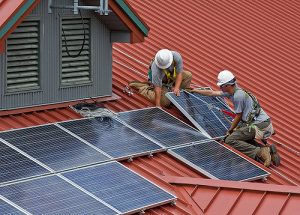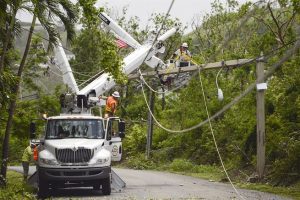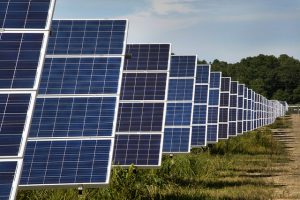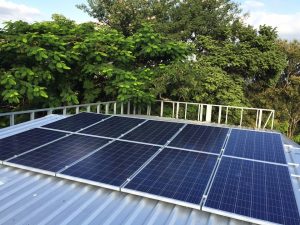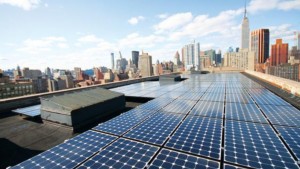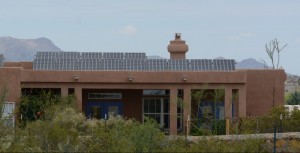7 item(s) were returned.
Communications Director
Vote Solar
In May, the California Energy Commission unanimously approved the nation’s first commitment to putting solar on qualifying new home construction starting in 2020 – a move that’ll be good for our cost-of-living and our climate alike. Building solar on new homes is consistent with California’s zero net energy goals for new buildings, and it’s a great way of getting rooftop solar built cheaply for customers. When solar PV is installed at the time of construction, you get economies of scale and save big on non-hardware costs like customer acquisition, permitting and financing. Assuming modules are 40 cents/W and the other… [more]
View InsightDirector of Strategic Research
Energy Futures Initiative
Quote: Blockchain is not just buzz, it is an existing – and exciting – new technology Cities are complex patchworks of infrastructures that include electric grids, natural gas distribution systems, water distribution networks, telecommunications systems, transportation networks, and buildings that can be built or modified to maximize energy efficiency. These systems are highly interdependent. Water systems, transportation, buildings, and telecommunications all need safe and reliable delivery of electricity. While these systems need to be increasingly integrated, they are often structurally and institutionally isolated, subject to different regulatory regimes and managed by siloed departments and private utilities. The objective… [more]
View InsightPresident
The Stella Group, LTD
According to the Fourth National Climate Assessment, humans are the dominant cause of global temperature rise, which many believe is directly responsible for the increased intensity of extreme weather events. The assessment shows that extreme events have cost the U.S.more than $1.1 trillion since 1980, and also warns that “The frequency and intensity of extreme high temperature events are virtually certain to increase in the future as global temperature increases”. We have only to look to Texas, Florida, and Puerto Rico where major hurricanes caused catastrophic damage to the electric grid creating heightened concern for resiliency. The inability to re-establish… [more]
View InsightPresident
Micro-Utilities, Inc.
Twenty-nine states have renewable energy mandates. California’s mandate calls for 33% renewable energy by 2020 while New York State mandates 50% of its electricity be renewable by 2030. It is one thing to set energy or electricity mandates and quite another to achieve them. New York is quite fortunate; today 26% of its electricity comes from renewable electricity sources. However, large hydroelectric facilities today provide 80% of NY’s renewable electricity and, unless more hydropower is imported from Canada, an expanded contribution from large hydropower seems unlikely. So to meet this 50% mandate, solar and wind which today produce 5.2% of… [more]
View InsightPrincipal
CACW|Watts
As we continue to debate what the future mix of grid generation will be, we should also critique projections of grid demand that suggest the largest share of future generation will continue to derive primarily from central power sources. Distributed resources like on-site wind, solar, and energy efficiency are filling U.S. power needs in greater amounts every year while also offsetting central generation requirements. The structure of our system is changing in ways many policymakers and investors are not seeing. It would be a mistake to underestimate the potential of clean energy. In 2015, the Energy Information Administration’s (EIA) figures… [more]
View InsightOn July 20th, the World Economic Forum in collaboration with the New York Governor’s office, organized a workshop focused on New York’s Reforming the Energy Vision (REV) initiative. A number of leading energy professionals participated, including representatives from the utility sector, capital markets experts, as well as current and former state utility regulators. Participants worked together to craft practical policy recommendations designed to advance the various NY REV goals. Participants discussed approaches utilities could take to engage low and moderate-income (LMI) customers. Currently, New York has 2.3 million LMI households, representing one-third of the state’s population. At current funding levels,… [more]
View InsightSolar power generation in the U.S. is on the rise with an added 7.3 gigawatts (GW) of total installed capacity in 2015. Demand for solar is projected to increase as much as 119% in 2016. Some believe that growth in the U.S. solar market is primarily influenced by federal and state subsidies and tax credits, such as the Solar Investment Tax Credit (ITC). The ITC is a 30% federal tax credit for residential and commercial solar projects available through 2019. Until recently, state incentives have also impacted the growing U.S. solar market. Nationwide, states have started rolling back tax credits… [more]
View Insight